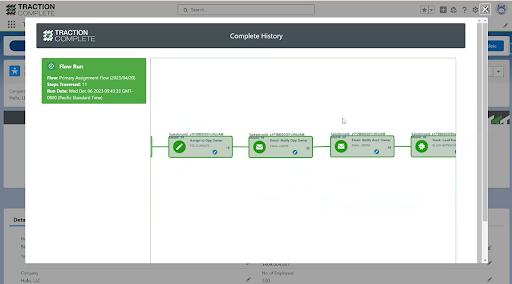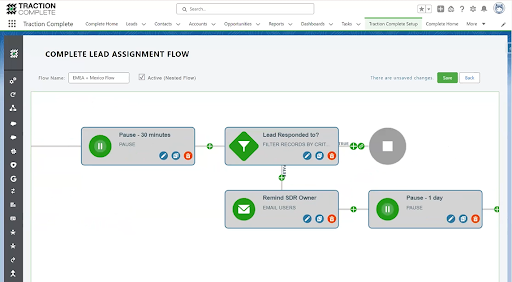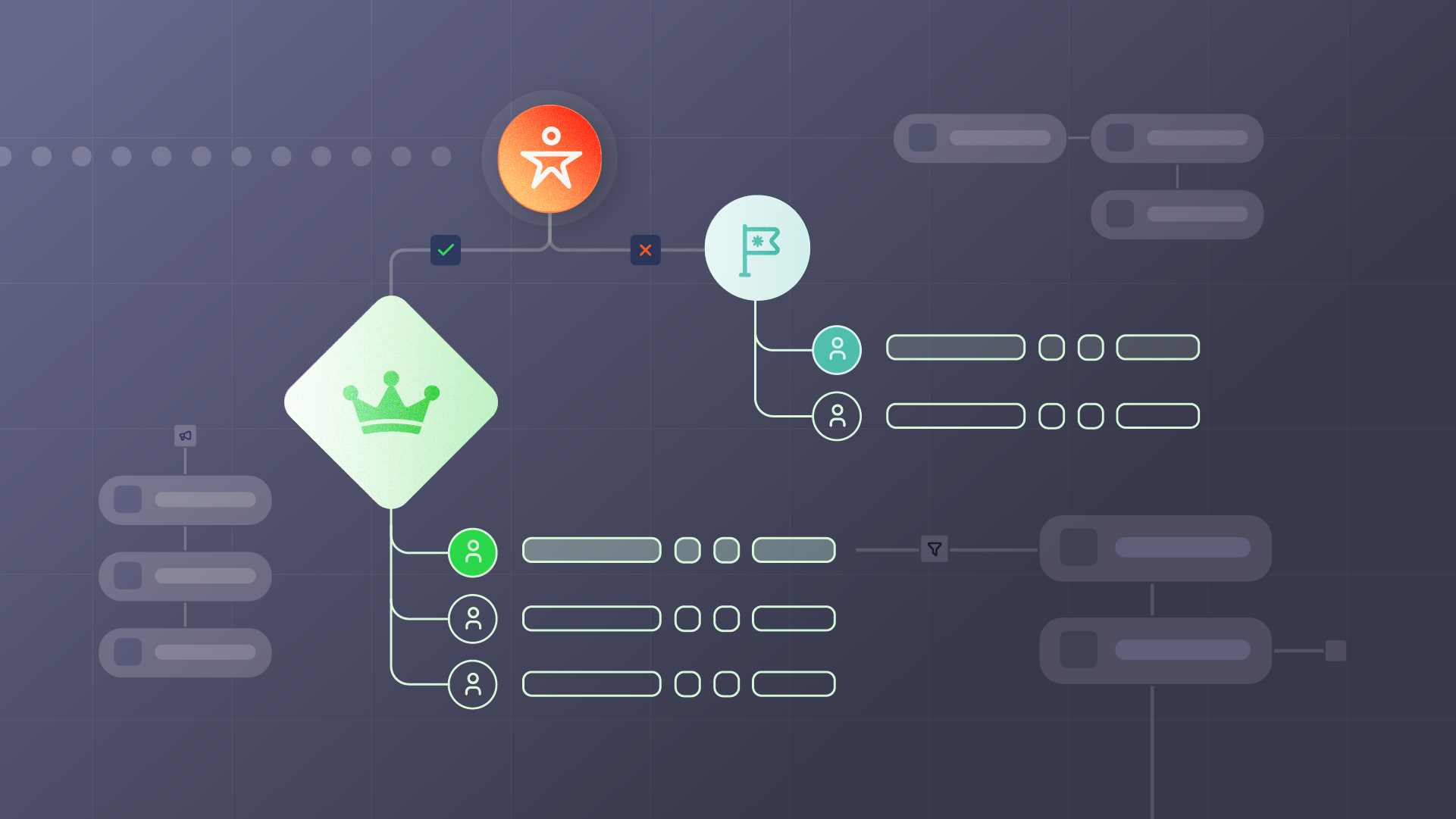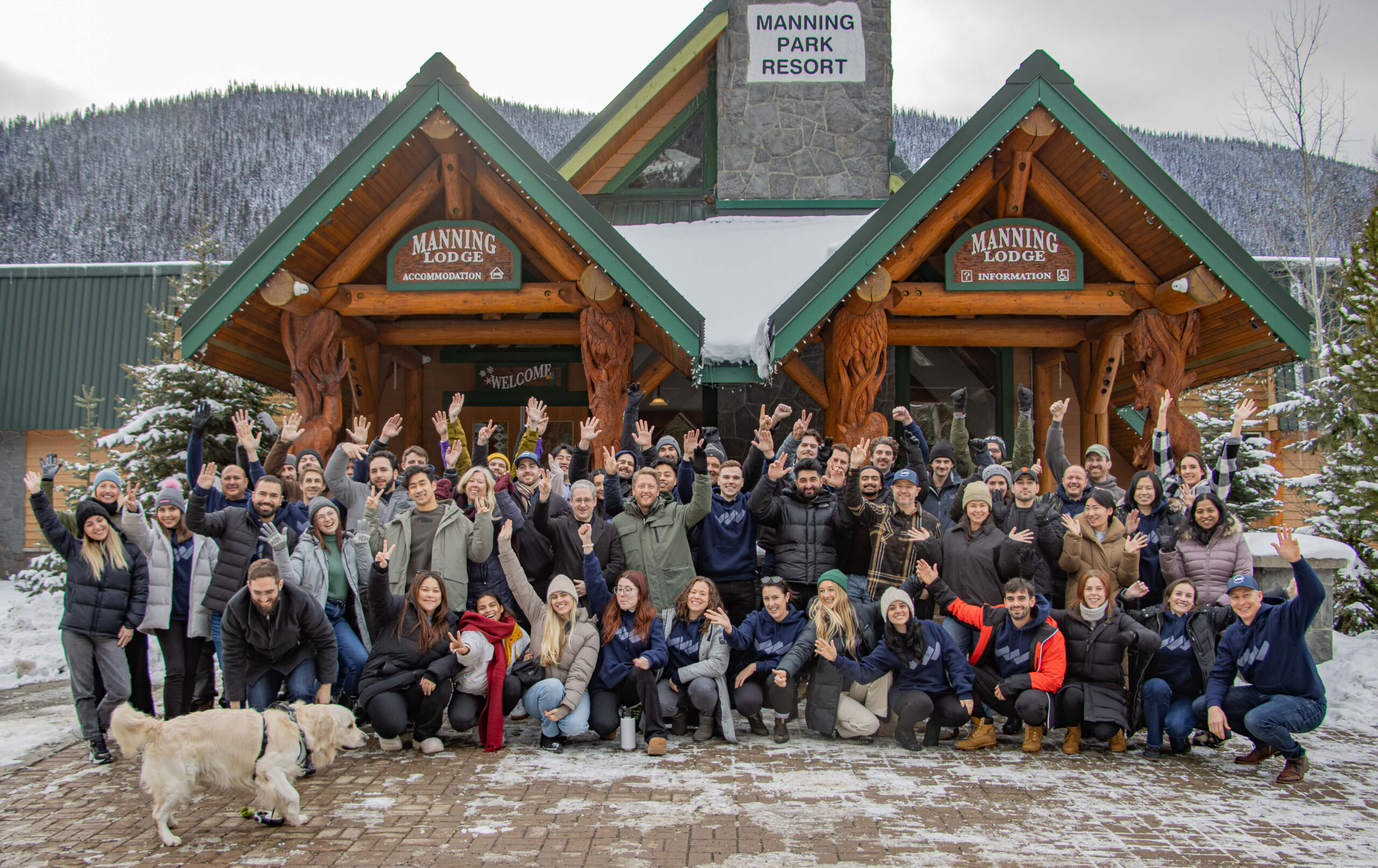Introduction
A relay race is a team effort. When passing the baton, you need to trust that your teammate is there to receive it and will get your team to the finish line.
If that handoff is slow, fumbled, or the baton gets dropped, your team’s chances of winning drop drastically.
The handoff of leads between marketing and sales is the same. When a promising lead is in the funnel, you want to hand it over quickly and close the deal without breaking a sweat. Drop the lead, or fumble the pass, and you’re much less likely to turn that lead into a customer.
When it comes to an effective handoff between marketing and sales, it’s less about trust and more about understanding the moving parts that can derail your team’s efforts.
Whether your biggest challenges are slow response times or bottlenecks in the sales process, here are the steps you can take to improve the marketing to sales handoff and win the race.
You might also like:
- 5 things to know before you renew your lead routing software in 2024
- How to automate the Opportunity Contact Role Field in Salesforce
- 3 Salesforce sales processes stopping you from selling more
4 ways to improve the marketing to sales lead handoff
Build a contingency plan for your lead routing
Lead routing is easy when you have the right criteria and the entire sales team available.
But whether it’s due to a changing go-to-market strategy, sales reps joining or leaving the team, or BDRs being on vacation or at capacity, things are rarely that simple.
What do you do when a junk lead comes through your round robin? Or when an SDR is on vacation for two weeks, but they’re still being assigned leads?
Building a contingency plan when these speedbumps appear can keep leads moving smoothly from the marketing team to sales.
Using an assignment flow gives you a built-in system to deal with these nuances. A contingency plan for your lead routing should include flows that evaluate a sales rep’s availability and use fallback steps if they’re not available.
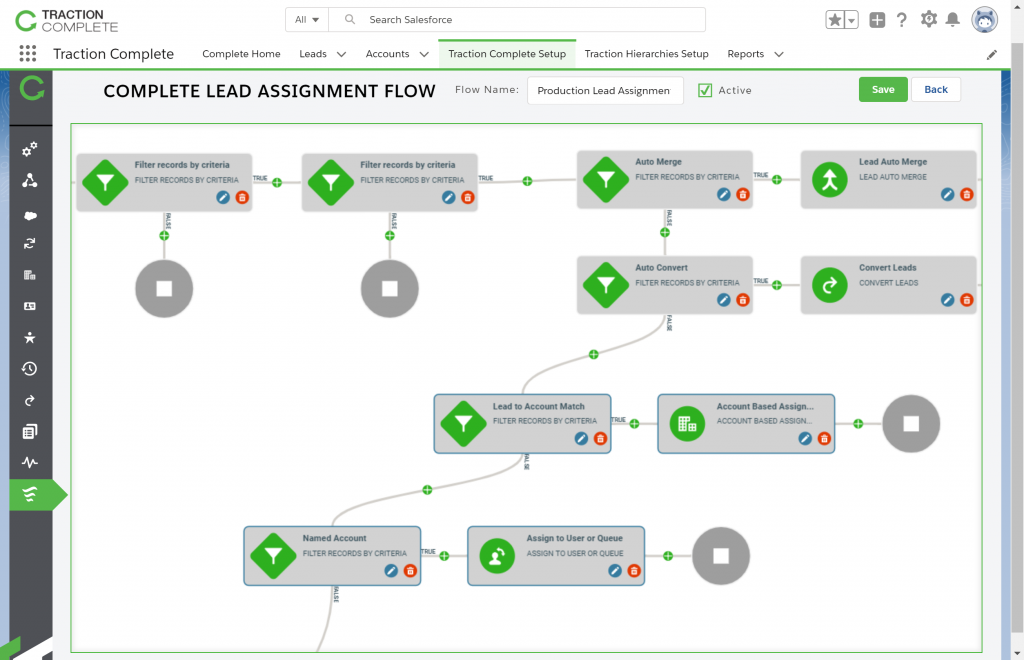
For starters, how would you manage your lead routing if an entire sales team in the northeast United States is sick or away on vacation? Using a fallback step, you can automatically route leads to an adjacent team like SDRs in the midwest territory.
Another use case for a fallback step could include using a round robin assignment flow for your SDRs and enabling availability. If an SDR isn’t available, it can skip them. If all SDRs are unavailable, a fallback step can be used to route the lead to a BDR manager or another team member.
Building contingency plans around your lead routing will ultimately free up time for SDR managers. Their time is freed up for more important efforts and they no longer need to manually reassign leads that go unchecked.
Create visibility around your lead assignment
Another way to fumble the handoff of leads between marketing and sales is passing the baton to the wrong person altogether.
When a lead is assigned to the wrong sales rep, it takes a lot of time for managers to understand and answer how a record was triggered and why it was routed to a specific person.
For example, how would you explain when a lead comes in from Hulu LLC and an email from a Singapore email domain — but instead of getting routed to an APAC sales rep, it’s routed to an AMER sales rep instead?
Having visibility into why and how this happened is crucial for sales leaders so that they can explain the problem, solve it, and move forward.
The solution here is to use a visual history log, which allows you to see how a lead moved through a flow and was assigned to a certain sales rep. You can then use that information to work backward and evaluate if the lead routing rules in place are correct or if they need to be changed.
Visual history logs are also much easier to understand than trying to decipher long lines of custom code or text-based logs.
Use notifications to keep sales reps accountable
When marketing hands off a lead to the sales team, they want to ensure that the lead is being followed up on within the SLA time.
Responding to a lead within five minutes is 21 times more effective than calling after 30 minutes. The more time that passes, the less likely your team is to close a deal.
One way to solve this is to build a pause step into your lead assignment flow. This allows you to wait before continuing to route the flow and can be used to notify owners of new or untouched leads.
Here’s what that looks like — a lead comes in and it’s assigned to an SDR, but that SDR doesn’t respond to it within the first 30 minutes.
A pause step will pause the flow for 30 minutes and check if the lead has been responded to before executing the rest of the branch. If it hasn’t been responded to, it will send an email or Slack notification notifying the SDR.
Multiple pause steps can be built into a flow to send reminders over several hours or the course of a day. If a lead hasn’t been responded to within a certain time frame, users can add subsequent steps to determine the next course of action — whether that’s rerouting the lead to another rep or notifying the SDR manager.
The pause step also has several additional use cases such as:
- Pausing the flow to wait for field enrichment from a third-party data provider
- Pausing the flow after assignment to stamp the owner lookup on an incoming record
- If a lead comes in after hours, pausing until the next business day to assign the record (better reflecting SLA timers and business hours)
Use SLA timers to identify bottlenecks
How do you identify bottlenecks in the marketing-to-sales handoff?
Whether it’s taking too long to book a first meeting, identify decision makers, or put out a proposal, sales managers need to be able to identify these bottlenecks and solve them.
Tracking leads at each stage is a great way to continually build and improve on the lead handoff. You can do this by using multiple SLA timers for each stage of the lead conversion process.
By customizing start criteria for when the SLA timer should run, you can track the length of each step of lead handling and save it directly to the records themselves.
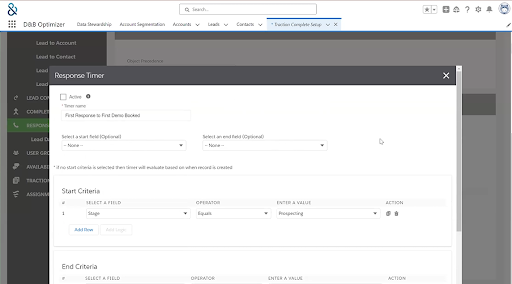
As a bonus, you can also use multiple timers to A/B test and segment your SLA times based on different ICPs (ideal customer profiles).
For example, you might want to understand the average closing time between selling to high-tech and higher education or compare these times with win rates.
Having this data allows you to A/B test solutions to bottlenecks and understand how changing, removing, or adding a step can impact the speed and likelihood of a deal closing.
Conclusion
At the end of the day, leads are the lifeline of your revenue. To increase the likelihood of leads turning into happy customers, marketing and sales teams need to be operating seamlessly.
Whether it’s automating the lead-to-account matching process, customizing assignment flows with a no-code UI, or uncovering bottlenecks with multiple SLA timers, Complete Leads helps teams operate more efficiently and sell more.


